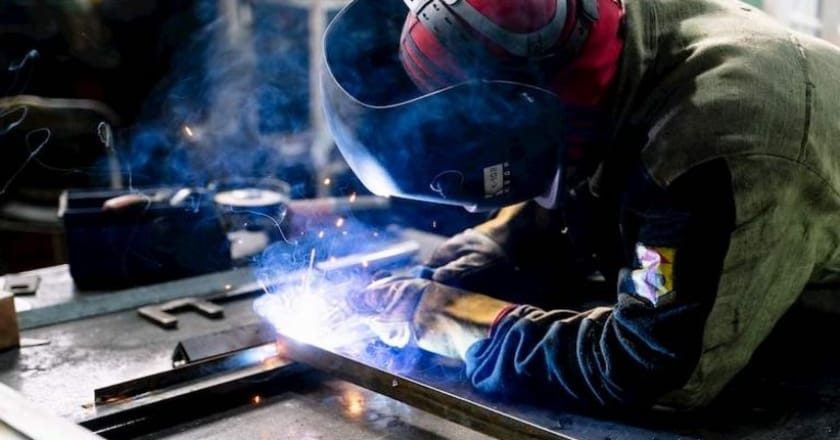Sheet metal is one of the principal forms used in metalworking, and it can be cut and bent into a variety of shapes. Countless everyday objects are fabricated from sheet metal. In this blog, we at Dainsta, have decided to provide you with the best available guidelines for working with Sheet Metals.
In this article we will learn:
- What is Sheet Metal?
- How is it made?
- Effective Guidelines for working with Sheet Metal
- Quick tips for Sheet Metal
What is Sheet Metal?

Sheet metal is metal formed by a manufacturing process into thin, flat pieces. Thicknesses can vary substantially; thin sheets are regarded as foil or leaf, and pieces thicker than 6 mm i.e 0.25 inches are recognised as plate steel or structural steel.
It’s available with various coatings for corrosion resistance or surface finish. Sheet metal is made by taking a large cast ingot and rolling it into a long ribbon of the desired thickness. This long, flat piece of metal is then wheeled into a coil and cut into sheets before being sent to a motor shop.
Sheet metal is great for huge, durable parts with comparatively few features. They make good RF shields and ground planes, and thicker gauge parts are great for adding strength and weight to things. Sheet metal isn’t so good for very small parts, complex or very precise geometry, highly cosmetic parts, or lightweight parts.
How is it made?

Low Volume
For lower volumes (1 part – 10,000 parts), your parts will be made using a blanking and forming process. A blank (the flat version of your part) will be cut from a sheet using a punching or laser cutting process, and then bent to the final shape using a brake press.
Punching
At a very high level, sheet metal punching is similar to using a hole punch on a piece of paper. A top tool catches the material against an appropriately-shaped bottom tool and pushes through, forming a hole. Modern industrial sheet metal punches are CNC operated and are capable of hundreds or thousands of punches per minute.
Lasering
Industrial laser cutters are the bigger, much more powerful and expensive. It’s awe-inspiring and frankly a bit terrifying. These machines also often sport auto-load capabilities and blazing fast cutting speeds. On the plus side, lasers require no tooling.
Bending
At low volumes, flat blanks from a punch or laser are bent using a press brake – a hydraulic press that squeezes two jaws together with dozens of tons of pressure. They can be fitted with a wide variety of tooling to produce different bends. For low volumes, several alignment fixtures will be set up along the length of a press, and an operator will manually align and form each bend in your part.
High-volume
For higher volumes (10,000 parts and more), you start moving towards sheet metal stamping. While punching uses small tools to punch out one feature at a time, stamping uses a single, large tool to stamp out the whole part at once. Stamping tools are similar to injection moulds, in that they’re expensive to produce and single-purpose.
Progressive die-stamping
Simple parts can be stamped in a single operation, but more complex parts require what’s known as progressive die tooling. A progressive tool is two large pieces of metal – a top half and a bottom half. Each half contains many punch tools, along with bending, shearing, and forming operations. These operations are organized into several stations that the part passes through before emerging fully-formed from the opposite side of the tool.
Effective Guidelines for working with Sheet Metal

- Everything starts with a blank: All sheet metal parts (well, almost all of them) start as blank. A blank is a pattern of holes and features cut into a flat sheet of metal, which will then be bent up into a sheet metal part. Sheet metal is much easier to work with and transport when it’s flat, so shops want to do the bends last, as much as possible.
- Everything is dependent on thickness: The thickness of your sheet stock determines the strength and weight of your part, and your minimum bend radii, punch size and flange length. If your part is large and you need more strength, just increasing your material thickness is an easy design change.
- You can’t make a part bigger than your sheet: Sheet metal comes in sheets, which means you can’t make a part that’s bigger than the sheet that you start with but when you start designing and wrapping metal around corners, it’ easy to forget and run out of the sheet.
- Punched features: Punched features are created by punches, and punches are constrained by physics. The rule of thumb is that a punch should be at least twice as thick as the material it’s penetrating, which means you can’t have holes in your material that are narrower than twice your material thickness.
Quick tips for Sheet Metal

Below listed are some assembly related Design for Manufacturability (DFM) tips which could be of critical knowledge if applied wisely for operating with sheet metals.
- Use near-net shapes for moulded parts to reduce machining and processing.
- Ease fixturing by providing open mounting surfaces and lateral clamping surfaces.
- Prevent parts from breaking easily by not giving them sharp corners or points.
- Thin walls, webs, deep pockets and deep holes should be avoided so parts will withstand clamping and machining without distorting.
- Builders should know what standard cutters, drill-bit sizes, and other tools are available in the shop before designing sheet-metal parts.
- Avoid irrelevant features as they delay production and increase machining times and cost.
In this article, we learnt about the basics of sheet metal, how it is made, best guidelines and some DFM quick tips. If you are interested to read more on similar manufacturing topics, you can check out our other fascinating blogs here.
